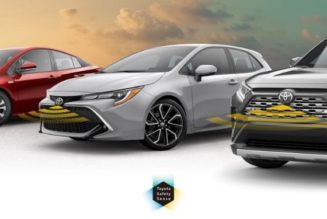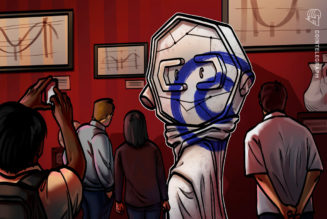When a tire slides relative to the road surface, whether skidding or spinning, bad things can happen—like accidents and riveting dash-cam videos. The engineering community first tackled the skidding problem, with an initial antilock braking (ABS) patent being awarded to German engineer Karl Waessel in 1928. The 1966 Jensen FF premiered automotive ABS technology, but the computerized four-wheel automotive antilock braking system as we know it today first arrived on the 1971 Imperial and became mandatory on all passenger vehicles as of 2004 (EU) and 2013 (USA). It didn’t take the engineering community long to recognize that the sensors, computers, and actuators needed to detect and prevent a tire from skidding could, with modification, be trained to prevent it from spinning—and thus was born what we know as traction control.
What Is Traction Control?
Traction control is an active safety feature engineered to allow vehicles to take maximum advantage of the available traction on the road surface by limiting or preventing the driven wheels from spinning. The systems can often be switched on and off via a button marked TC, TCL, or with an icon depicting the rear of a car above two backwards-S-shaped skid marks.
How Does Traction Control Work?
The system must sense or infer both the instantaneous speed of each driven wheel and the net speed of the vehicle overall. These data are then compared, and when a wheel is found to be spinning faster than the vehicle speed warrants, the system intervenes to prevent this. Hall Effect sensors typically do the wheel-speed sensing (these employ a stationary magnet near a spinning gear with evenly spaced teeth that alter the magnetic field as they pass the magnet). To sense vehicle speed, systems can monitor the speed of non-driven wheels, rely on onboard accelerometers, or even leverage onboard satellite navigation system data. To slow a spinning wheel, traction control systems utilize modified ABS hardware. Where ABS momentarily bleeds off a bit of hydraulic brake pressure to allow a skidding wheel to regain traction, with traction control it needs to be able to add hydraulic pressure to brake a spinning tire. Often the engine power is also curtailed by trimming the throttle, spark, and/or fuel.
Why Would You Turn Off Traction Control?
In most driving conditions, it’s safest to leave any and all safety systems switched on. However, under conditions when there is a low-friction material covering a higher-friction surface—like freshly fallen snow, windblown sand, or maybe a thin mudslide over a roadway—spinning the tires a bit to “dig down” to the higher-friction road surface can mean the difference between standing virtually still with a traction-control light furiously blinking and powering through or up and over a slippery situation.
Is It Safe to Drive Without Traction Control?
Under the slippery road conditions above, at low speeds when experiencing difficulty getting your vehicle moving, it is safe to switch off traction control. But at higher speeds it is generally safest to leave the system engaged, in case you find yourself accelerating through a corner and encountering an unexpected low-friction surface like black ice. In such a situation, traction control might well prevent an accidental power-oversteer slide that could result in a crash.
What Causes a Traction Control Light to Come On?
Because traction control is a safety system, its functionality is continuously monitored by the onboard diagnostic electronics. That light comes on any time the system is off—either because the driver switched it off (in which case, pressing the button again will reactivate the system and extinguish the light) or because the system has experienced a fault of some sort. A common cause of such faults is the failure of an individual wheel-speed sensor, often due to having run over something that knocked the sensor out of alignment or from excessive corrosion. The traction control light will also often blink when the system has detected wheelspin and is working to regain traction. It will go off when traction control intervention is no longer necessary.
Can You Drive With the Traction Control Light On?
A failed traction control system is unlikely to debilitate a vehicle, but if the light remains on after pressing the on/off button, have the system serviced as soon as possible and drive with extreme caution in low-traction situations such as wet, snowy, or icy roads. Note that if the light is on a lot because it is working continuously—such as when ascending a long, steep hill on loose gravel or dirt—be aware that the vehicle is likely working against the brakes a lot, which can result in excessive brake wear and in extreme conditions, brake fade and failure. So take a breather every so often in such conditions.
Does Traction Control Use More Gas?
Traction control should have no impact on fuel economy—except perhaps in the example above, where extended traction control intervention is required to scale a long slippery hill.
Launch Control
An enthusiast-oriented riff on traction control is launch control, which seeks to carefully meter out torque to precisely match the traction of the road surface; to keep the tires turning with an optimum slip of 5 to 20 percent, at which their dynamic friction is maximized. Many performance cars offer a launch control system—some with a button so marked, though many require some sequence of pressing other buttons to summon this capability.
How Has the System Progressed Into Stability Control?
Just as ABS hardware and electronics were lightly modified to provide traction control, traction control was similarly modified to provide electronic stability control (ESC). These systems are also known as active yaw control (AYC), electronic stability program (ESP), dynamic stability control (DSC), vehicle stability control (VSC), dynamic stability and traction control (DSTC), electronic stabilization program (ESP), active stability control (ASC), vehicle stability assist (VSA), etc. The key modification required to make this leap, in addition to increased computing power, was a means of measuring yaw, or the rate at which the vehicle pivots about its vertical center axis. Early systems attempted to infer yaw by comparing the differences in wheel speeds during a turn, but this estimate proved to be too rough an approximation, and soon actual silicon sensors became affordably available for directly measuring yaw.
ESC systems help to ensure a vehicle goes in the direction its steering wheel is pointed in adverse conditions in ways ABS and TC never could. It, too, uses the brakes, this time to attempt to stop a vehicle from spinning or sliding sideways. All stability control systems provide traction control, but the reverse is not necessarily true. Perhaps for this reason, traction control never became mandatory equipment, but stability control proved such a valuable safety system that governments legislated their mandatory use in Canada, the U.S., and the European Union beginning in 2011, 2012, and 2014, respectively.
Autonomous driving systems can be viewed as the next step in the evolution of ABS-TC-ESC systems, but this time the amount of software, sensors, and hardware that must be added is several orders of magnitude greater than each previous evolutionary step required.









